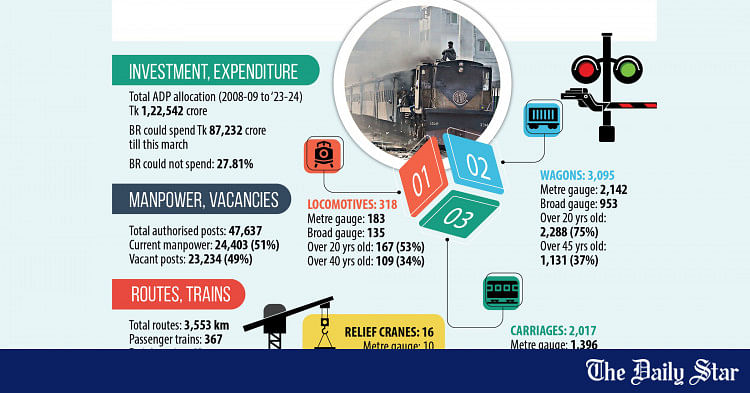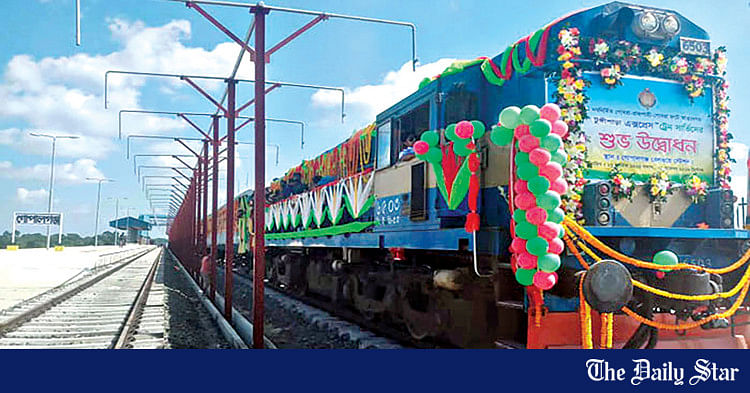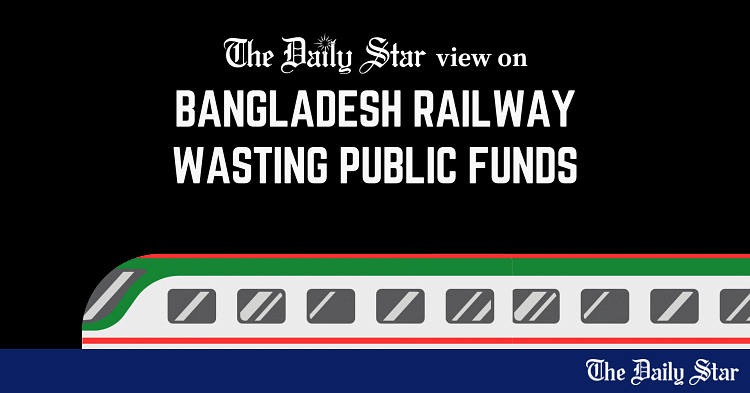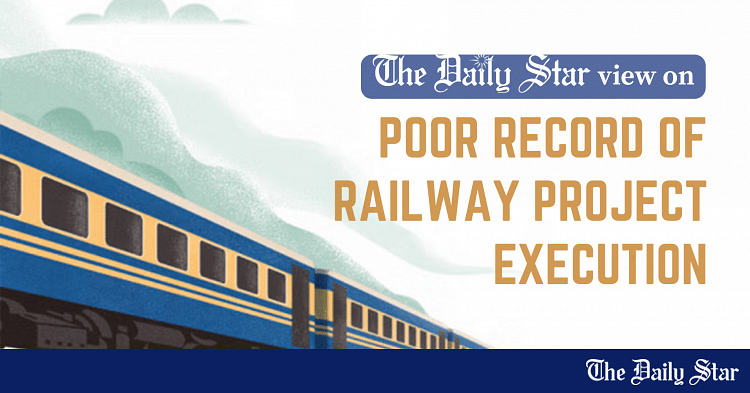Why is Bangladesh Railway struggling despite huge investment?
PHOTO: ANISUR RAHMAN
Despite thousands of crores of taka being invested in various infrastructure development projects in the railway sector, the crisis of Bangladesh Railway (BR) doesn't seem to end. It is still running train services with outdated engines and coaches, old and dilapidated railway lines, and risky bridges amid complaints of delay and mismanagement of tickets.
According to the 2022-23 annual report of the Ministry of Railways, the notable achievements of Bangladesh Railways from 2009 to June 2023 are: introduction of 143 new trains; construction of 873.19 km new rail lines, 237 station buildings and 1,037 bridges; renovation/reconstruction of 1,391.32 km rail lines and 794 railway bridges; procurement of 109 new locomotives, 530 passenger carriages and 277 freight wagons; and repair of 516 passenger carriage and 134 freight wagons, and so on.
Although more than Tk 77,500 crore have been spent on different railways development projects so far, how much of it has been used to solve the basic structural problems remains a question. A major part of this expenditure went towards the construction of new railway lines and station buildings. New railway lines were constructed and new train services launched one after another without provisions for adequate engines, coaches and manpower. As a result, on the one hand, a sufficient number of trains cannot be run on the new lines, and on the other hand, coaches cannot be added to the existing train services as per the demand. Even many local and commuter trains services has come to a halt. According to a report published in The Daily Star, the number of train services suspended by December 2022 was 99. And according to a report by The Business Standard, 13 pairs of local, commuter and mail train services have been shut down since December 1, 2023.
According to an estimate, more than 3,000 passenger coaches and about 500 locomotives are required to properly run all the trains of BR. But according to the railways ministry's 2022-23 annual report, currently there are 1,788 coaches, 47 percent of which have reached the end of their economic life. And the number of operational locomotives is only 295, of which 60 percent have expired. The number of freight wagons is 3,247, of which 67 percent have expired. These dilapidated engines, coaches and wagons often break down and cannot be used regularly. Consequently, engines that are functional operate more than one train a day, resulting in frequent train stoppages, disrupting train schedules.
At present, there is a huge shortage of railway station masters, loco masters (drivers), porters, level crossing gatemen, etc. The size of the current manpower is only 24,500 against a total of 47,637 posts. There are 2,236 posts of loco masters, assistant loco masters and sub-loco masters in two railway regions. In contrast, only 850 personnel are employed, which is only 38 percent of the manpower required for running trains.
Due to the shortage of engines, coaches, wagons and manpower, the BR is not able to provide full-scale services on three newly constructed routes—Dohazari-Cox's Bazar, Khulna-Mongla Bandar, and Kamalapur-Bhanga to Padma Bridge Rail Link—with a total investment of Tk 62,861 crore. Because of the shortage of locomotives and manpower, dedicated train services are yet to be launched on the Chattogram-Cox's Bazar route. After upgrading the Dhaka-Chattogram route to a double line with an investment of Tk 10,500 crore, only one train has been added. Only one train runs on Ishwardi-Pabna-Dhalarchar route built at the cost of more than Tk 1,714 crore.
The Bangladesh Railway has also spent huge sums of money on feasibility studies of various fancy projects, such as bullet trains, electric trains, circular trains, although no initiatives have been taken to implement these projects. But it has not made the necessary investment to increase the capacity of manufacturing or repairing railway coaches and wagons in the country. The Saidpur railway workshop, the largest in the country, is struggling with old and broken equipment and insufficient manpower. At present, there are only 622 people working in the workshop against the requirement of 2,859. Most of the 750 heavy machines are broken.
Even an adequate budget is not allocated for repair work. In the last financial year, against the demand for a Tk 27 crore annual budget, only Tk 6.5 crore was allocated. As a result, a workshop that used to repair 900 coaches and build 20 new coaches a year post-independence now can repair a maximum of 450 coaches a year and builds no new coaches at all. Not only that, In 2016, an initiative was taken to build a new railway coach factory in Saidpur at a cost of Tk 753 crore, later revised to Tk 1,460 crore, but it was not implemented. But if the coaches and wagons could be manufactured in the country, the procurement cost would be reduced to half.
BR also did not invest adequately to prevent accidents and make the railway services safer. Train derailment is the most common cause of railway accidents in the country, and most people die in collisions at unsafe railway crossings. About 82 percent of railway crossings across the country are not protected, as of July 2022. In many places, the train tracks are worn out, due to which trains often get derailed. For example, according to a recent report by the Daily Samakal, in a 24 km stretch of tracks on the Mymensingh-Bhairab route in Ishwarganj upazila, 8,000 clips were found missing on the railway sleepers, 142 nuts are missing on the fishplates, and 16 sleepers are missing and 69 are broken.
The railway authorities are yet to take any initiative to install automatic train protection systems to prevent head-on collisions and automatic fire detection and brake application systems in case of fire, even though trains in Bangladesh have suffered from such incidents causing huge losses of lives and properties. It is noteworthy that the railway service in the neighbouring India is already using an indigenously developed Automatic Train Protection (ATP) system named "Kavach" and a fire detection and brake application (FDBA) system to enhance passenger safety.
Sustainable development of the railway service is not only about building visible infrastructure. Shortage of engines, coaches, wagons and manpower must also be met, along with proper maintenance of the existing infrastructure, tracks, bridges, engines and coaches. Modernisation of railway signalling and safety systems must also be ensured on an urgent basis.
Kallol Mustafa is an engineer and writer who focuses on power, energy, environment and development economics.





























